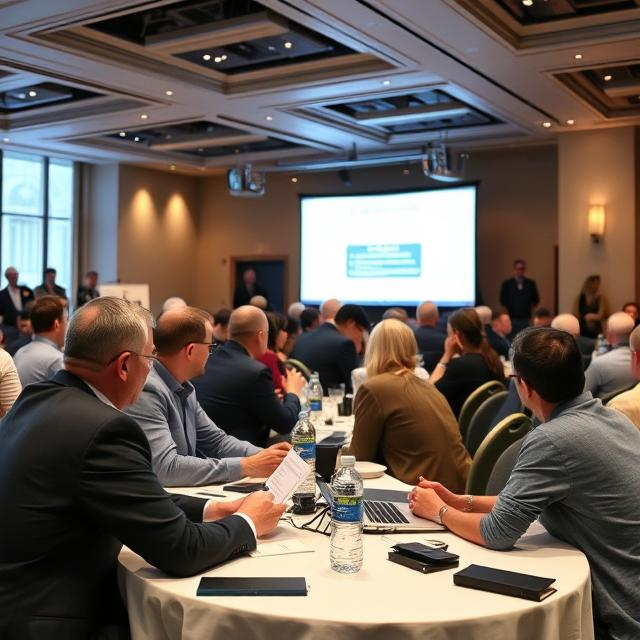Building a high-performance business team is one of the most critical components of a company’s success. The people you bring together, how you train them, and how you retain top talent can directly influence the culture, productivity, and long-term growth of your business. Creating a team that is motivated, skilled, and aligned with your company’s vision is no easy task, but it is essential for achieving your business goals. Here’s a roadmap to help you recruit, train, and retain the best talent to create a high-performance team.
1. Recruitment: Attracting the Right Talent
Building a high-performing team starts with recruiting the right people. The recruitment process is the first step in ensuring that you have individuals who possess not only the technical skills needed but also the cultural fit that aligns with your organization’s values.
a) Define Your Needs Clearly
Before you start looking for candidates, it’s essential to know what you need. Identify the specific skills, experience, and characteristics that will complement your current team and help you achieve your business objectives. Think about:
- Hard Skills: Technical competencies or industry-specific knowledge that are necessary for the role.
- Soft Skills: Communication, problem-solving, collaboration, and adaptability.
- Cultural Fit: Does the candidate align with your organization’s values and culture? Team cohesion depends heavily on cultural alignment.
b) Use Multiple Channels for Recruitment
Finding the right candidates often requires casting a wide net. Use various channels such as:
- Job Boards and Career Websites: Post job openings on well-known platforms such as LinkedIn, Indeed, or Glassdoor.
- Social Media: Social platforms like LinkedIn, Twitter, and Facebook can be great tools for finding potential candidates and networking.
- Employee Referrals: Encourage your existing team to recommend qualified candidates. Employee referrals often lead to high-quality hires who are a better fit for your culture.
- Recruitment Agencies: For specialized or senior roles, using a recruitment agency can save time and ensure you find top-tier talent.
c) Evaluate Candidates Holistically
Beyond resumes and interviews, consider conducting skills assessments, reference checks, and even trial periods to ensure the candidate’s abilities align with your expectations. During interviews, focus on not just technical knowledge but behavioral questions to assess how they handle challenges, work in teams, and make decisions.
2. Training: Developing Your Team’s Skills
Recruiting the right talent is only half of the equation. Once you have the right people in place, ongoing training and development are crucial for building a high-performance team. Continuous learning helps your employees grow, stay motivated, and perform at their best.
a) Onboarding Process
A structured and welcoming onboarding process sets the tone for your new hires. It should include:
- Company Culture and Values: Introduce them to the company’s mission, vision, and values to ensure alignment.
- Role-Specific Training: Provide clear, role-specific training that includes the tools, processes, and expectations they will need to be successful.
- Mentorship and Support: Assign a mentor or buddy to help guide them through their early days at the company and answer questions as they arise.
b) Continuous Professional Development
A high-performance team requires constant improvement. Invest in ongoing training programs, such as:
- Skill-Specific Workshops: Offer opportunities for employees to upskill in areas like leadership, communication, technical expertise, or industry-specific knowledge.
- Cross-Training: Encourage employees to learn about different roles within the company to increase flexibility and foster teamwork.
- Leadership Development Programs: Train your employees to become leaders by focusing on decision-making, problem-solving, and management techniques.
c) Promote a Learning Culture
Encourage continuous learning by fostering an environment where knowledge sharing and innovation are celebrated. Promote access to online courses, conferences, and certifications that can help employees stay at the cutting edge of their respective fields.
3. Retention: Keeping Top Talent Engaged and Loyal
Once you’ve recruited and trained a high-performing team, the next challenge is retaining them. High turnover can disrupt productivity, increase recruitment costs, and harm team morale. Keeping your employees engaged, motivated, and satisfied will ensure that you continue to benefit from their skills and commitment.
a) Offer Competitive Compensation and Benefits
A competitive salary and comprehensive benefits package are fundamental to retaining talent. Ensure that your compensation reflects the industry standards and rewards your employees’ contributions. This may include:
- Salary Increases and Bonuses: Regularly assess compensation packages and provide raises and bonuses tied to performance.
- Health and Wellness Benefits: Offering healthcare, dental, and vision benefits as well as wellness programs can make your company more attractive to top talent.
- Retirement Plans: Providing employees with a sense of long-term security through retirement plans and financial support can boost morale and loyalty.
b) Foster a Positive Work Environment
A positive and inclusive work environment is crucial for employee retention. Consider the following strategies:
- Open Communication: Ensure that employees feel heard and respected. Encourage transparent communication from leadership and foster an open-door policy where employees can share feedback or concerns.
- Team Building and Recognition: Regularly celebrate achievements and recognize employees for their hard work and contributions. This can be through public acknowledgment, awards, or team-building activities that promote camaraderie and engagement.
- Work-Life Balance: Offering flexibility through remote work, flexible hours, or additional vacation days shows employees that you value their well-being and understand the importance of work-life balance.
c) Provide Career Growth Opportunities
One of the main reasons employees leave companies is a lack of advancement opportunities. To keep your team motivated and loyal, focus on their growth within the organization:
- Clear Career Paths: Help employees understand how they can grow within the company and the steps required to move into more senior roles.
- Mentorship Programs: Pair employees with mentors who can guide their career development and provide ongoing support.
- Promote From Within: Whenever possible, promote internal candidates rather than hiring externally. This shows employees that there are opportunities for advancement and that their hard work is recognized.
d) Employee Engagement and Feedback
Retaining a high-performing team requires regular feedback and engagement. Use tools like surveys, one-on-one meetings, and performance reviews to gather feedback about job satisfaction, career goals, and workplace challenges. Act on this feedback to make improvements that demonstrate that you value your employees’ opinions and are invested in their success.
Conclusion: Building a High-Performance Team Takes Time and Effort
Recruitment, training, and retention are all critical components of building a high-performance team, but they require a strategic and thoughtful approach. By attracting the right people, continuously developing their skills, and fostering an environment that prioritizes engagement and career growth, you set the foundation for long-term business success. A high-performance team is more than just a group of employees — it’s a well-coordinated unit where everyone is aligned, motivated, and empowered to achieve the company’s goals.
When you focus on creating a team where everyone can thrive, your business will not only reach its objectives but exceed them. Investing in your people is one of the best decisions you can make for your business and its future.



